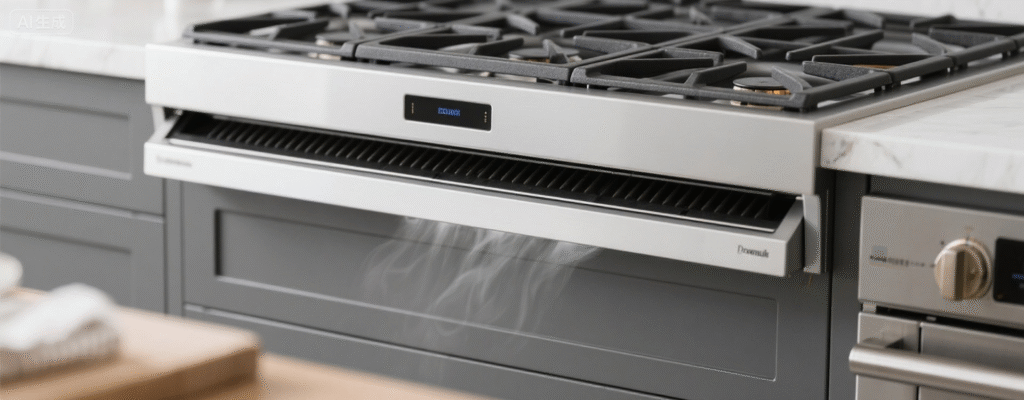Choosing the right ventilation for your kitchen is a critical decision, especially when integrating appliances for a seamless look. This article focuses on built in cooktop vents, exploring the innovative solutions available for modern homes. We will delve into the different types of downdraft systems and provide essential guidance on selecting the perfect model to ensure a stylish, functional, and smoke-free cooking environment.
The Mechanics of Downdraft Ventilation
Unlike traditional overhead range hoods, built in cooktop vents, commonly known as downdraft systems, are designed to pull air, steam, and grease downwards and then horizontally through ductwork beneath the floor or behind cabinetry. This technology is ideal for kitchen islands or open-plan spaces where an overhead hood would obstruct views or lighting. There are two primary mechanisms:
- Passive Downdraft: These are simpler systems that rise from the countertop when in use. They rely on the natural flow of air but can be less effective with powerful, rising heat and smoke.
- Powered Downdraft: These are more advanced and incorporate a powerful fan that actively sucks air downwards. A landmark study by the Home Ventilating Institute (HVI) in 2019 confirmed that modern powered downdraft systems can achieve performance metrics comparable to many standard hoods, making them a viable option for most cooking tasks when selected correctly.
For homeowners seeking a clean aesthetic without sacrificing performance, exploring the latest powerful downdraft systems is a crucial step in the kitchen design process.
Selecting the Right System for Your Kitchen
Choosing the ideal built in cooktop vent requires careful consideration of several factors to ensure it meets your culinary needs. The most critical specification is the fan’s power, measured in Cubic Feet per Minute (CFM). For effective ventilation, a higher CFM is necessary, especially for high-heat cooking like searing or stir-frying. The Home Ventilating Institute (HVI) provides certified ratings for these products, offering a reliable benchmark for comparison.
Beyond power, you must decide on the venting method. Ducted systems, which expel air outside, are far superior in removing heat, moisture, and odors. Ductless (recirculating) systems use charcoal filters to clean the air before releasing it back into the kitchen; these are easier to install but are less effective at removing heat and require frequent filter changes. When planning your kitchen, it’s wise to review a comprehensive collection of ducted and ductless range hoods to understand the full spectrum of available options and their installation requirements.
In summary, built in cooktop vents offer a sophisticated and space-saving alternative to traditional range hoods, perfect for achieving a minimalist kitchen design. By understanding the mechanics of downdraft technology and carefully evaluating factors like CFM and venting type, you can make an informed decision. Ultimately, investing in the right kitchen ventilation solution is essential for maintaining healthy indoor air quality and preserving the beauty of your home.
